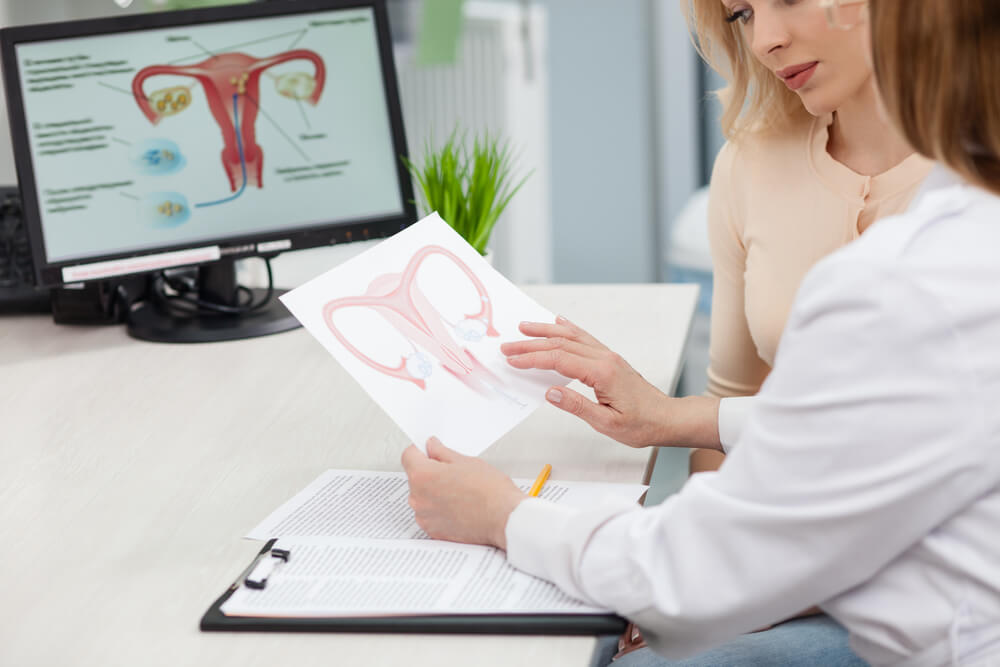Vaginal laxity is a common concern among many women, impacting both physical and emotional well-being. In this interesting article, you will be able to read about the causes and effective treatments for vaginal laxity, shedding light on the importance of understanding and addressing this issue.
When it comes to questions of what causes a loose vagina, many people are hesitant to explore this topic further, so one of the most important steps towards resolving this issue is finding a medical professional who will be able to answer all your potential questions. This said, one of the best in the field can be found in different medical centers in the U.S., but at University Park OBYGN the patient-care, expert team and the premium quality equipment ensure the best possible care.
What is Vaginal Laxity?

Vaginal laxity is a condition characterized by the loss of tightness and elasticity in the vaginal canal. This phenomenon occurs when the supportive tissues and muscles in the vaginal wall become stretched or weakened. One of the primary contributing factors is the natural aging process, during which hormonal changes, specifically a decline in estrogen, play a pivotal role.
Additionally, vaginal elasticity is commonly associated with childbirth, particularly after vaginal delivery, as the tissues undergo significant stretching. The consequences of vaginal laxity can extend beyond physical discomfort, impacting a woman’s intimate relationships and overall quality of life. Understanding the causes and implications of vaginal laxity is crucial for exploring effective treatments and interventions that can help with vaginal tightening and address associated symptoms.
What Causes a Loose Vagina?
Different factors can be the culprit of a loose vagina diagnosis. Here are some of the most common ones explained in more detail.
- Childbirth: Vaginal delivery, especially multiple or traumatic births, can lead to stretching and weakening of the vaginal muscles and tissues.
- Aging: Natural aging processes result in hormonal changes, particularly a decline in estrogen, contributing to reduced elasticity in the vaginal tissues.
- Hormonal Changes: Fluctuations in hormonal levels, such as those occurring during menopause, can lead to a decrease in estrogen, impacting vaginal tightness.
- Genetics: Some individuals may be genetically predisposed to having naturally looser or tighter vaginal tissues.
- Chronic Coughing: Persistent coughing can put strain on the pelvic floor muscles, potentially leading to vaginal laxity over time.
- Obesity: Excess body weight can exert pressure on the pelvic region, affecting the integrity of the vaginal muscles.
- Certain Medical Conditions: Conditions like Ehlers-Danlos syndrome, a connective tissue disorder, can affect the strength and elasticity of various tissues, including those in the vaginal area.
- Smoking: Smoking has been linked to decreased blood flow and collagen production, potentially contributing to reduced vaginal elasticity.
- Inadequate Pelvic Floor Support: Weakness in the pelvic floor muscles, which support the organs in the pelvic region, can lead to vaginal laxity.
- High-Impact Activities: Engaging in high-impact sports or activities that involve repetitive, forceful movements can contribute to the stretching of vaginal tissues.
Understanding these causes is essential for addressing concerns related to vaginal laxity and exploring appropriate treatments or preventive measures.
Signs and Symptoms
Vaginal laxity manifests through various signs and symptoms, including:
- Decreased Sensation during Intercourse: One of the common symptoms of vaginal laxity is a reduction in sexual satisfaction due to diminished friction and sensation during intercourse.
- Urinary Incontinence: Weakened pelvic floor muscles can lead to difficulties in controlling urine, resulting in urinary incontinence, especially during activities like coughing, sneezing, or laughing.
- Vaginal Dryness and Discomfort: Reduced elasticity in the vaginal tissues can lead to dryness and discomfort, causing irritation and a sense of dryness during daily activities or intercourse.
- Feeling of Vaginal Looseness: Women may experience a subjective feeling of looseness in the vaginal area, affecting their perception of intimate well-being.
- Tampon Slippage: Difficulty in keeping tampons in place or a sensation of them slipping may indicate a lack of tightness in the vaginal canal.
- Decreased Confidence and Body Image Concerns: Vaginal laxity can impact a woman’s self-esteem and body image, leading to feelings of insecurity and reduced confidence.
- Pelvic Pressure or Heaviness: Some women with vaginal laxity may experience a sensation of pelvic pressure or heaviness, especially after standing or engaging in physical activities.
- Difficulty Retaining a Partner’s Penis: Women may notice challenges in maintaining a secure grip or tightness around their partner’s penis during sexual activity.
- Air Embolism during Intercourse: In rare cases, vaginal laxity can contribute to the trapping of air in the vagina during intercourse, leading to a phenomenon known as “vaginal flatulence.”
- Reduced Intimate Satisfaction: Overall dissatisfaction or discomfort during intimate moments can be a symptom of vaginal laxity, affecting the emotional and physical aspects of a woman’s well-being.
Recognizing these symptoms is crucial for seeking appropriate medical advice and exploring potential treatments to address the underlying causes of vaginal laxity.
The consequences of vaginal laxity extend beyond the physical realm, affecting a woman’s emotional and psychological well-being. It can lead to a decrease in self-confidence, body image concerns, and strained intimate relationships.
Vaginal Tightening Treatments

Vaginal tightening treatments encompass a range of approaches aimed at addressing the loss of tightness and elasticity in the vaginal canal, providing women with options to enhance their intimate well-being. One non-invasive method involves Kegel exercises, which target the pelvic floor muscles responsible for supporting the uterus, bladder, and rectum. Regular practice of Kegel exercises strengthens these muscles, promoting improved vaginal tone.
Additionally, topical estrogen therapy is a common treatment for women experiencing vaginal laxity due to hormonal changes, particularly during menopause. By applying estrogen directly to the vaginal tissues, this therapy helps replenish diminished estrogen levels, thereby improving elasticity and reducing symptoms of dryness and discomfort.
For those seeking advanced interventions, laser therapy has emerged as a promising option. Fractional laser technology stimulates collagen production in the vaginal tissues, promoting natural tightening. This minimally invasive procedure is known for its effectiveness in addressing both aesthetic concerns and functional issues associated with vaginal laxity.
Surgical options, such as vaginoplasty or labiaplasty, are considered for more severe cases. These procedures involve reshaping and tightening the vaginal tissues, providing a long-lasting solution for women seeking a more significant transformation.
Vaginal tightening treatments offer a spectrum of choices, allowing individuals to select an approach that aligns with their preferences, comfort levels, and the severity of their condition.
Lifestyle Modifications
In addition to medical treatments, certain lifestyle modifications can contribute to vaginal tightening. Maintaining a healthy weight, staying hydrated, and avoiding smoking are factors that can positively impact vaginal health.
Conclusion
In conclusion, understanding the causes and treatments for vaginal laxity is crucial for women seeking to address this common concern. Whether through lifestyle changes, exercises, or medical interventions, there are various options available to enhance vaginal tightness and improve overall well-being.
By acknowledging the impact of vaginal laxity and exploring effective treatments, women can take proactive steps towards reclaiming confidence and satisfaction in their intimate lives. To help you overcome any concerns and answer questions feel free to contact our center and let our experts help you. We are here!


